Many DnD races populate the worlds of D&D from graceful elves to hardy dwarves. When creating a character, you pick the race you want to play as. In addition, you’ll pick a subrace: a subset of the overarching race. But what is the difference between them and how do you know what to pick? Let’s explore together.
A Changing Landscape
The world of D&D has changed over the years, even within the lifetime of the 5th edition of the game. The sourcebook Tasha’s Cauldron of Everything introduced rules for customizing your origin. This opened a vast array of options for creating characters that were interesting and unique without sacrificing on optimizing.
If your DM allows this customization (which they probably will), you will be able to change the ability score increases given to your race and to whichever ability score fits your character. You are also able to swap out weapon and skill proficiencies.
In addition to mechanical changes, races might differ narratively in your game because D&D can be run in many different worlds. Some of these worlds are official settings such as Eberron or Ravnica. Other settings are creations of your dungeon master. The lore published by Wizards of the Coast might not be used by your DM so it is always good to talk to your DM about the races in their setting.
With that in mind, let’s look at the official races.
Aarakocra
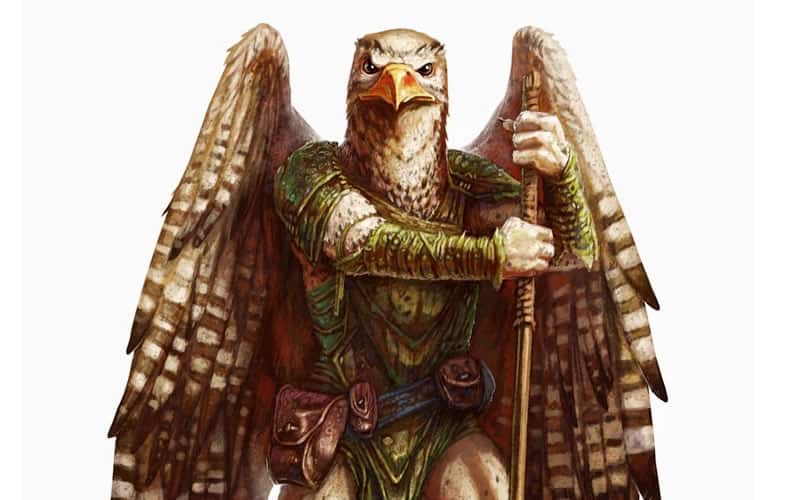
Aarakocra, also known as bird folk, are humanoid creatures with the talons, wings, feathers, and heads of large, peregrine birds. Aarakocra is native to the Elemental Plane of Air and what nests they have on the Material Plane serve as outposts in the world.
Most Aarakocra keeps to themselves and their own tribes, preferring to soar through the sky for hours or even days rather than interfere with the affairs of the world.
Playing as an aarakocra has one key benefit: flight. As a bird folk, you have a flying speed from level 1, potentially rendering challenges effortless as you glide over everything.
Aasimar
Aasimar are humans born with a touch of the celestial, turning them into celestial champions. Aasimar is linked to a divine being who guides them through their dreams to enact an ordained path. Despite this, aasimar have their own will and some can turn into agents of evil instead of following their path.
There are three aasimar subraces, each with their own relationship to this divine weight that’s been thrust upon them. Protector aasimar is concerned with guarding the weak against forces of evil and use their blessing in a noble manner. Scourge aasimar are fanatics bent on stamping evil from the world, even if their divine power consumes them in the process. Lastly, fallen aasimar are touched by dark powers or have forsaken their path, their inner light replaced by a shadow.
Bugbear
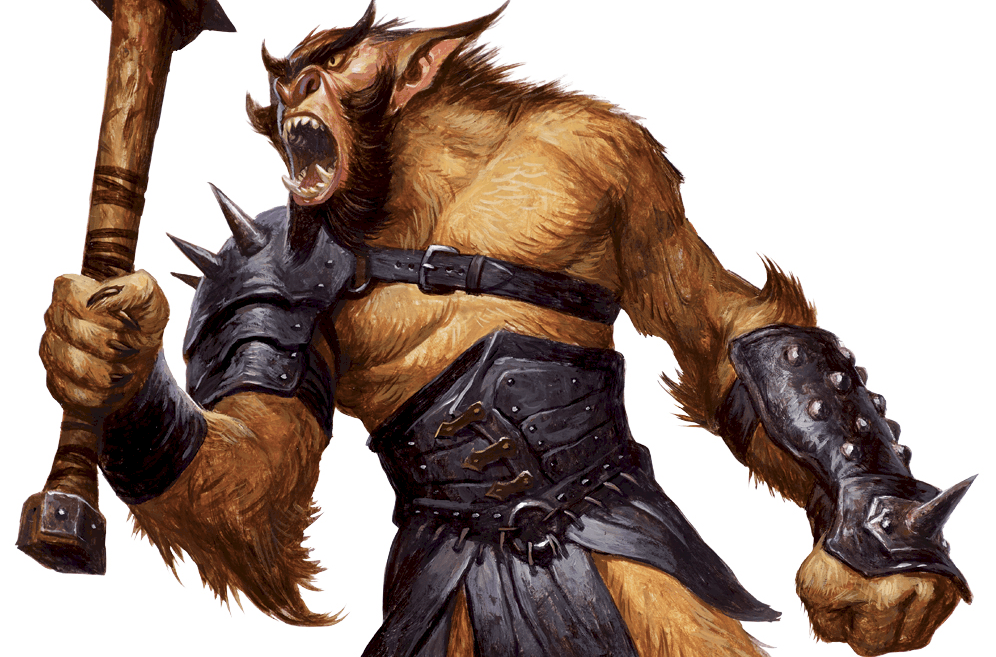
Bugbears are ferocious goblinoids born and bred for battle. Originally monsters in D&D, they became playable as one of the monstrous races. Bugbears typically have very powerful builds and their bodies are covered in hair.
Bugbears worship Hruggek, a being from the plane of Acheron and believe that when they die, they might fight alongside their god. As such, they seek to prove themselves by defeating as many enemies in battle as possible.
Centaur
Centaurs appear in the D&D campaign setting books Guildmaster’s Guide to Ravnica and Mythic Odysseys of Theros. Centaurs, as they appear in many works of fantasy, are humans from the waist up and below that their form is instead is a horse from the neck-down.
Centaurs in D&D are more like humans than like horses, only standing six or seven feet tall. However, they are one of the fastest races given their equine body. The centaur was the first non-humanoid player race. Instead, your creature type is fey, making you immune to spells like Charm Person or Hold Person.
Changeling
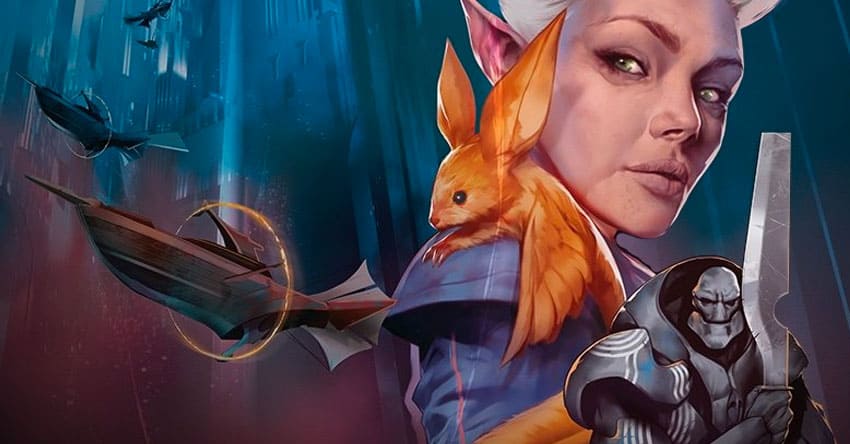
Changelings are humans with the innate ability to shapeshift from Guildmaster’s Guide to Ravnica. In their true form, changelings are pale and colorless, like a blank canvas. A changeling can create and develop particular personas that they adopt for a particular purpose or to express a particular emotion. Multiple changelings might share the same persona like a uniform.
Custom Lineage
Custom lineage was introduced in Tasha’s Cauldron of Everything and opens the door for you to create a character to look and be exactly how you want. If you want to create a character who is half-orc and half-aasimar, you can decide what you look like and use the custom lineage traits to build out your traits.
Dhampir Lineage
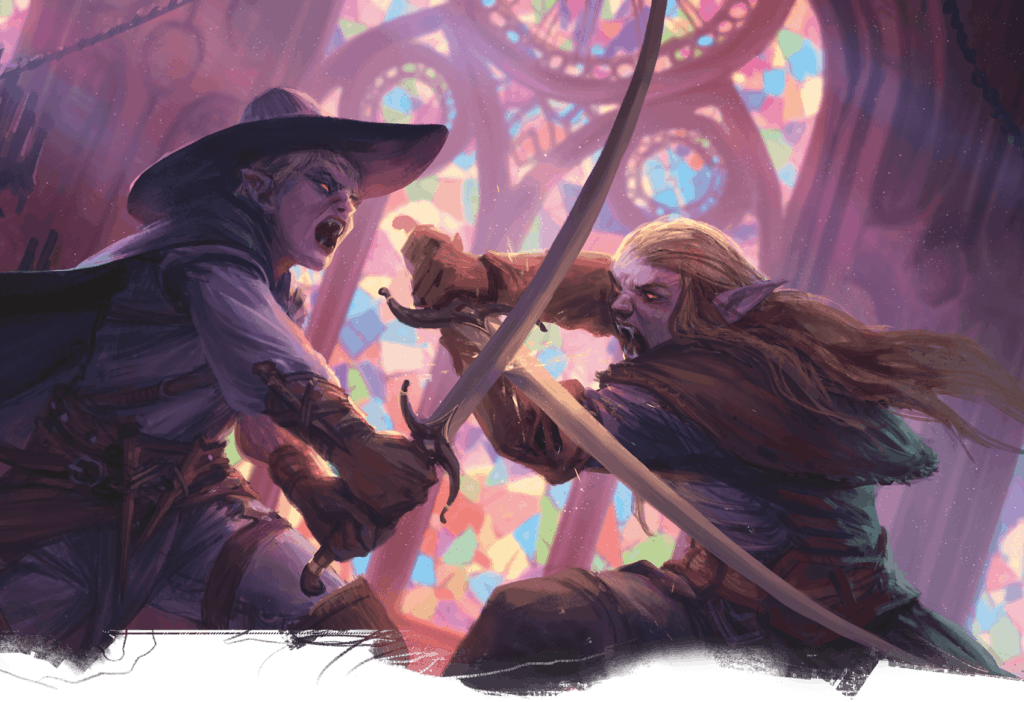
Dhampir lineage is humanoid creatures tied to the undead and who suffer from a vampiric lust for blood or flesh. Published in Van Richten’s Guide to Ravenloft, lineages are heritage traits that any race could have. The book gives you options for creating a dhampir character or becoming a dhampir character during the game.
Dhampir is a vampiric creature whose deathless nature renders them with no need to breathe, the ability to walk on walls, and vampiric fangs that suck the life out of targets to both deal damage and heal or aid the dhampir.
Related read: Comprehensive Dhampir 5e Guide.
Dragonborn
Dragonborn are humanoid creatures with dragon features. Although some humanoid races were spawned from the union of humans and another race, this is not how Dragonborn came to be. They were originally hatched from dragon eggs as their own unique race by magic from a dragon or dragon god. Dragonborn has the scales and heads of dragons but lack wings and a tail.
Each Dragonborn can trace their ancestry to a certain type of dragons such as black, gold, red, copper, and more. Dragonborn has an innate breath weapon and damage resistance determined by this lineage.
Dragonborn Variants
In Explorer’s Guide to Wildemount, two Dragonborn variants were introduced. The first is the dragon blood. Draconbloods have long tails and were once mighty conquerors in the world of Exandria and enslaved the Ravenite Dragonborn. They have since lost this status and might long for when they were in charge.
The second Dragonborn variant is the Ravenite, who were enslaved by the dragon blood until they rose up and overthrew their masters.
Both dragon blood and ravenites don’t have the damage resistance of the original Dragonborn.
Dwarves
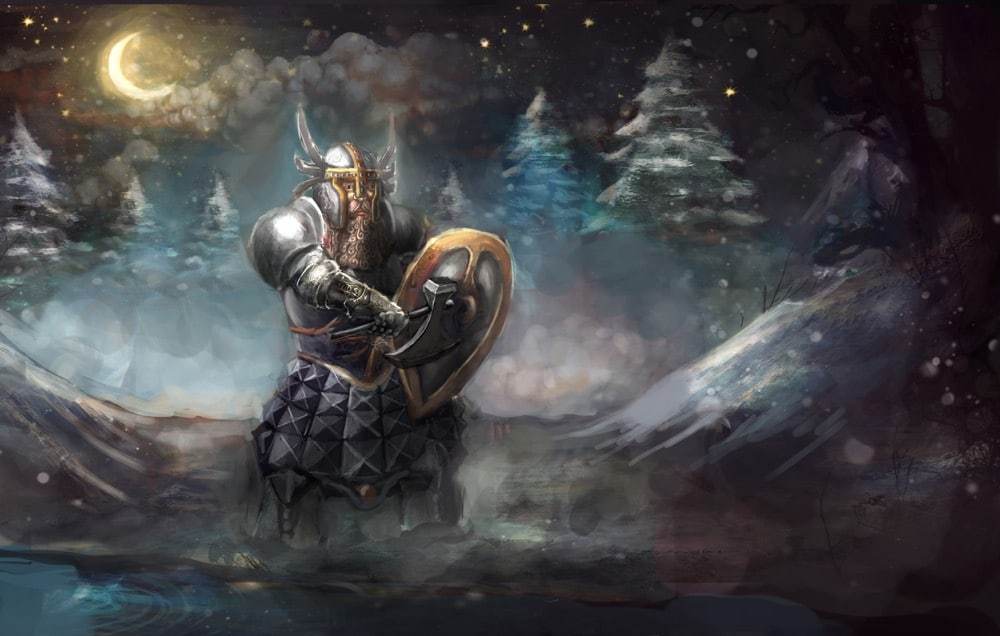
Dwarves are stout, hardy and traditional. They carve kingdoms into mountains and mine the interior to fuel their cities. They are known for their sturdiness, ability to drink, and their incredible beards. Since much of D&D and the fantasy genre is based on the works of J. R. R. Tolkien, it’s no surprise that Gimli from Lord of the Rings is the quintessential Dwarf: hardy, hard-working, and slow. Dwarves can live up to 400 years old and respect their traditions.
There are three dwarven subraces distinguished by where in the world they live. The first is hill dwarves who, as their name suggests, live in hills and are intuitive and resilient. Mountain dwarves hail from higher altitudes and are more accustomed to a difficult life in rugged terrain. They also gain two +2 ability score increases.
Lastly, the duergar were a clan of dwarves lured and enslaved by mind flayers by preying on their greed for great treasure deep underground. After generations of torture and psychic alterations, the duergar eventually revolted but turned against their god and live in the Underdark as a dark reflection of surface-dwelling dwarves.
Related reads: Comprehensive Duergar Guide.
Elves
Elves in D&D are creations of the divine being Corellon, whose ever-changing form battled the orc god Grummsh. The first elves emerged from the blood that Corellon shed in that struggle. After Corellon was betrayed by one of these first elves, Lolth, the race of elves became divided. The elves sought refuge in the Feywild after the divide, becoming humanoids there, before many of them traveled to the Material Plane.
Elves are graceful beings who live estranged from the rest of the world in ancient forests and are lovers of everything reminiscent of the Feywild. They are slender with pointed ears and their skin color varies from copper to bronze to obsidian. They are described in the Player’s Handbook as haughty, which is a nice way of saying that they think they’re better than everyone else.
Elves are quick, perceptive and notably don’t need to sleep and can’t be magically put to sleep. Instead, they can spend four hours in a trance-like state and benefit from the effect of a full 8 hours of sleep. There are many subraces of elf, each differing slightly.
There are six playable subraces of elf in D&D. High elves are very reclusive and sometimes pretentious. They retain some knowledge of magic and don’t tend to mix with other races. Wood elves are swift creatures at home in large forests and can navigate the world deftly and wisely.
After the conflict with Corellon, the elf god Lolth retreated into the Abyss, and her followers were banished to the Underdark: a place of darkness deep under the surface of the world. For centuries, these elves absorbed the twisted nature of the Underdark and became the drow, also known as dark elves. Drow has evolved to have black skin and pale hair and eyes.
In the early days, the elves traveled to many different realms. Those who never left the feywild are called eladrin. There are four types of eladrin, each associated with a season. Elves who found home within the vast oceanscapes they visited are called sea elves. Lastly, the elves who traveled to the Shadowfell and work in service to the Raven Queen are known as the Shadar-Kai.
Firbolg
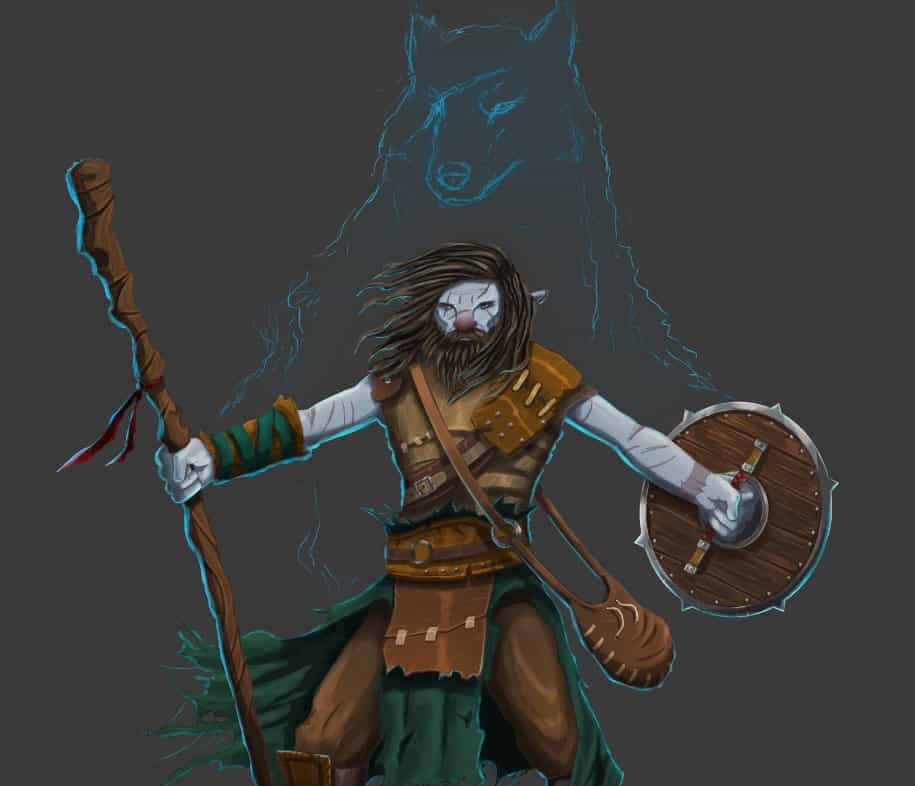
Firbolgs are a race of gentle giant-kin who live in secluded tribes deep within natural realms. They are peaceful guardians of nature who have developed a natural druidic talent and look after the land and keep to themselves.
Genasi
Genasi are the offspring of genies and mortals. Genies, native to an elemental plane, imbue their offspring with the power of that plane. As such, there are four types of genasi: air, earth, fire, and water.
Each type of genasi inherits physical qualities that represent its element. Air genasi seem to always be caught in a breeze while fire genasi have hair that looks like fire. In addition, each genasi is able to innately cast spells that utilize their element.
Gith
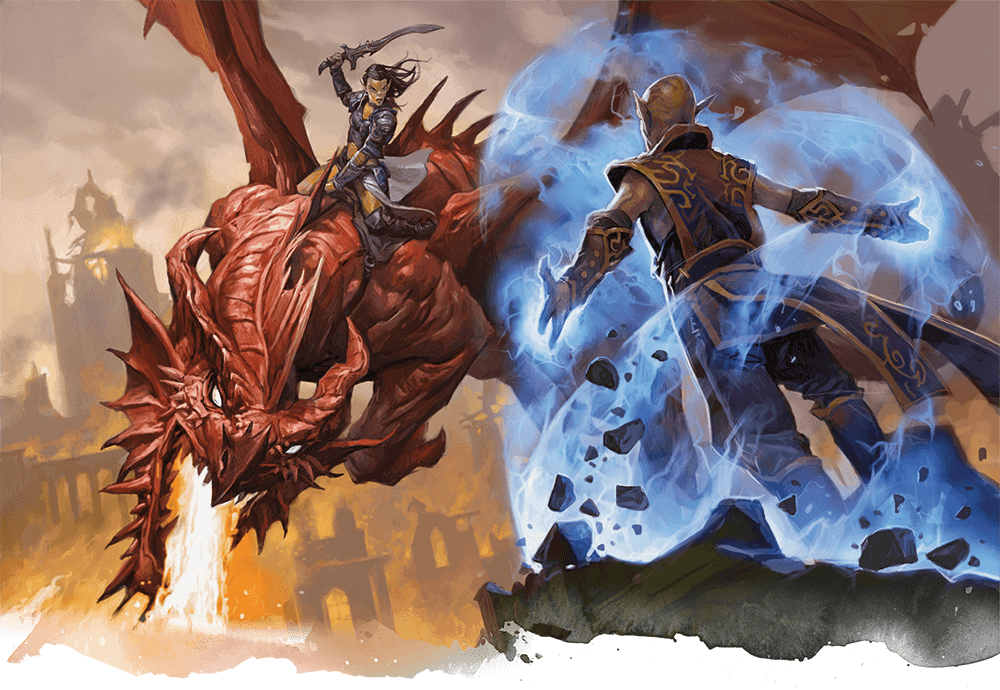
The gith are an otherworldly race who, for generations, were enslaved by mind flayers. A warrior named Gith led them to freedom but the victory quickly turned sour as a conflict sparked between two distinct factions, creating the githyanki and githzerai.
The githyanki believe in Gith’s leadership and have become a militaristic society dedicated to killing their enemies. When Gith died, she was replaced by Vlaakith, the lich-queen. Githyanki live on the Astral Plane in the city of Tu’narath.
The Githzerai believed that Gith, their liberator, was creating another form of slavery after they freed. Instead, they keep a strict monastic lifestyle on the plane of Limbo. Their psionic ability is powerful enough to form an impervious stronghold out of the chaos of Limbo.
Gnome
Gnomes are happy-go-lucky pranksters and lovers of life. They stand about 3 feet tall and build close-knit communities in hilly, wooded lands. They rarely hide how they’re feeling, most with large smiles adorning their faces. Many gnomes are natural tinkerers, making them great artificers and wizards.
There are three subraces of gnome. Forest gnomes are illusive and secretive gnomes that live in hidden woods and are rarely seen by others. Rock gnomes are natural inventors and tinkerers. Lastly, Svirfneblin—also called deep gnomes—are gnomes who live in the Underdark. Unlike the drow or duergar, deep gnomes are not the evil version of surface-dwelling gnomes.
Check out our Comprehensive Gnome 5e Guide.
Goblin
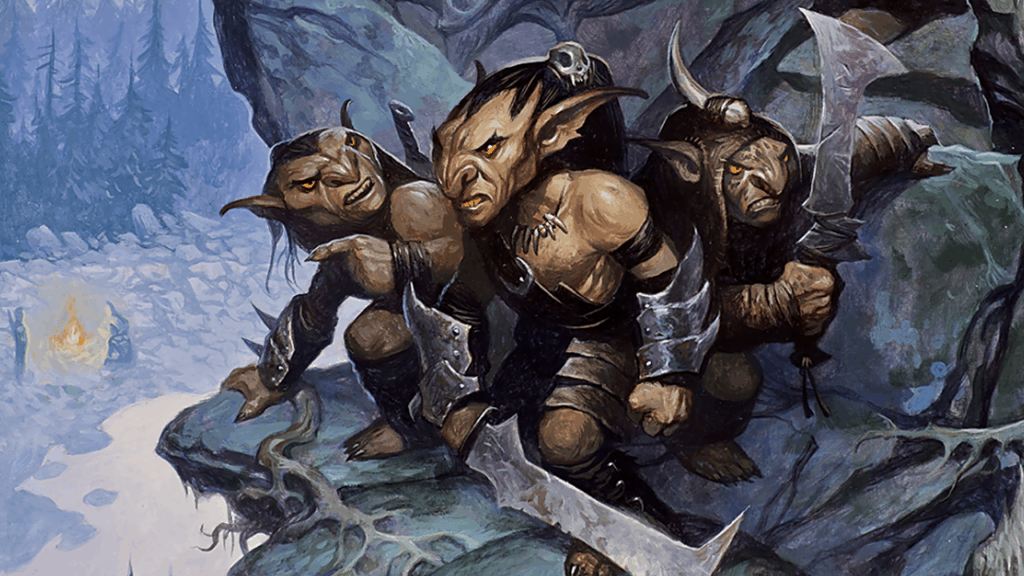
Goblins are one of the playable monstrous races from Volo’s Guide to Monsters. Goblins are typically selfish, greedy creatures that live in dark caves, dungeons, and mines. Due to their size and innate sneakiness, goblins make great infiltrators and scouts.
Goliath
Goliath are huge, mountain-dwelling tribesmen who strive to outdo each other and themselves with every feat. The harsh environment in which they live instils a value for strength and self-sufficiency but they also have a strong sense of fair play. Goliaths can shake off damage and are naturally acclimated to high altitudes and cold climates.
Half-Elf
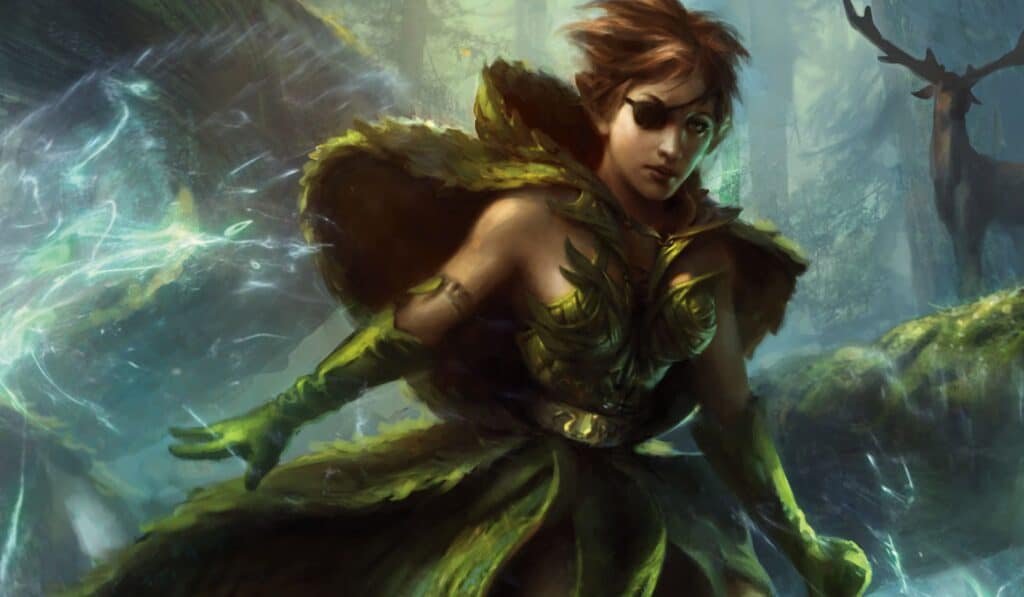
Half-Elves are half-human and half-elf and live halfway between the two very different worlds of humans and elves. They might share the pointed ears of elves but to an elf, they look like humans.
Half-elves get ability score increases to three different abilities, increasing their power higher than most other races. They also inherit the fey ancestry of elves, allowing them to resist charm effect more easily and can’t be put to sleep by magic.
Some elves trace their elvish lineage to certain types of elf. The variant half-elf options found in the Sword Coast Adventurer’s Guide allows half-elves to have some of the inherited traits of their ancestor. For example, an aquatic half-elf might have an innate swimming speed.
Half-Orc
Half-orcs are the offspring of the union of humans and orcs. Although humans and orcs are typically enemies, some peaceful treaties have been signed between the two races and can be sealed with a marriage. Half-orcs have gray or green skin, severe underbites with jutting teeth,, and are typically strong and savage creatures, wearing their battle scars with pride.Halfling
Halflings are friendly, diminutive creatures full of cheer and simple wants. They stand around 3 feet tall and tend to stay out of the terror of wars, preferring the peace and quiet of a roaring fire in their hearth. Halflings don’t tend to build kingdoms, preferring agricultural shire communities.
Halflings are the same as hobbits in Lord of the Rings. However, Wizards of the Coast don’t own the rights to the term “hobbit” and cannot name them that.
There are three subraces of halfling. Lightfoot halflings are smaller and elusive creatures and are typically more common. Stout halflings are hardier creatures, more similar to dwarves in nature. Lastly, Ghostwise halflings trace their lineage back to an ancient war among halfling tribes and stick to small, isolated communities, mistrustful of outsiders. Ghost halflings have the innate ability to communicate telepathically.
Hexblood Lineage
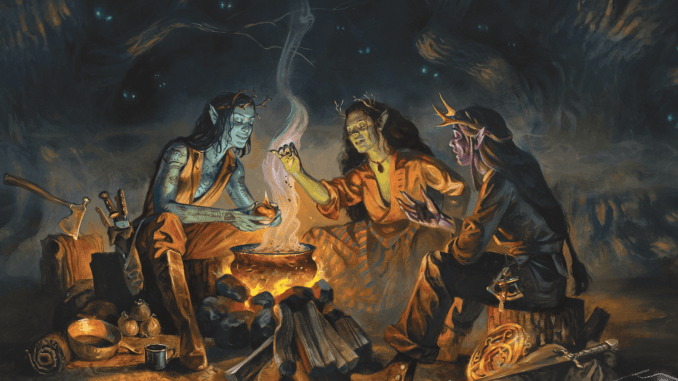
The hexblood lineage is the second lineage from Van Richten’s Guide to Ravenloft. Hexbloods are creatures infused with witchcraft or fey energy, usually the influence of a terrifying hag.
Hexbloods are fey creatures able to create a token from a nail or tooth and communicate telepathically to the bearer or see and hear from the token.
Hobgoblin
Hobgoblins are a goblinoid race of large, dark orange-skinned creatures. While they resemble goblins physically, hobgoblins share an orc’s love of war and boast incredible martial prowess.
Human
Humans are the most common race in D&D, able to be found in almost all corners of the world. While there are many races of humans found across the nations, they all have the same traits. Humans are the only race to get a bonus to all ability scores, making them a Jack of All Trades Feature but not naturally inclined to one particular specialty.
The variant human (colloquially called “human”) sacrifices some of the ability score increases for access to a skill proficiency and a feat.
Kalashtar
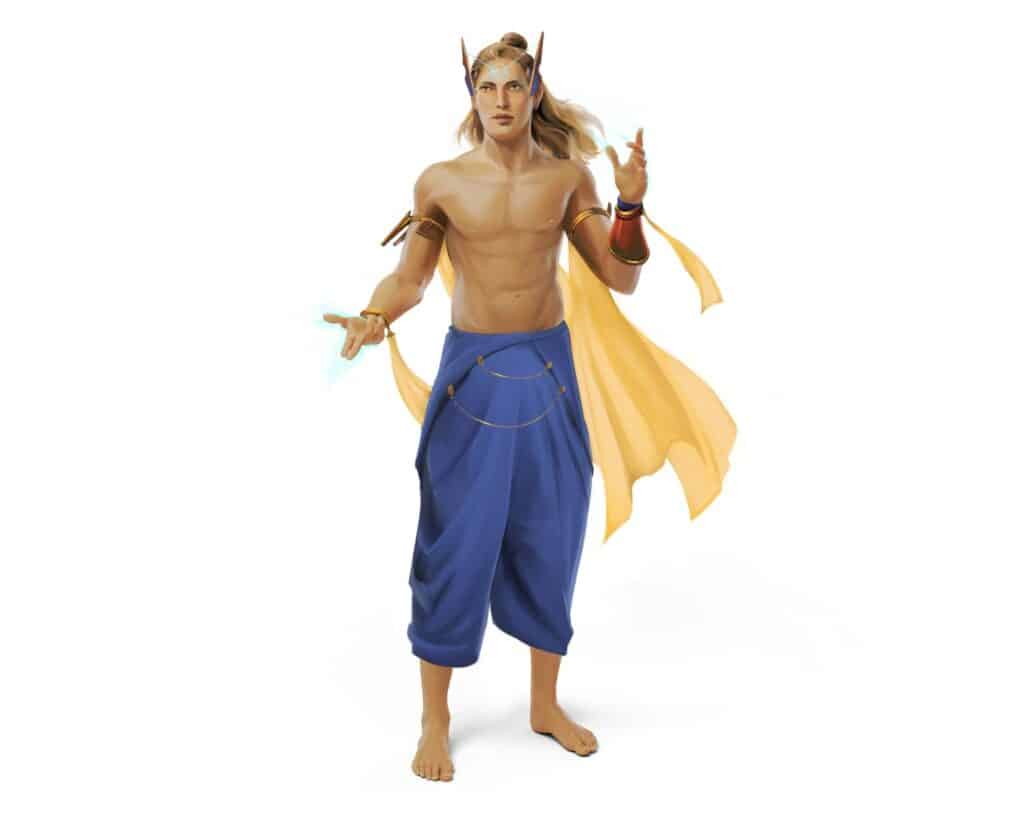
Kalashtar is a race of half-human, half-spirit beings. Appearing in Eberron: Rising from the Last War, kalashtar seem alien in nature as they cannot shake their connection to a spirit from the plane of dreams.
Their connection to the spiritual shapes them physically to look more attractive and even give them glowing eyes. The spirit also grants them some basic psionic abilities and resistance to psychic damage.
Read our full Kalashtar Race Guide.
Kenku
The kenku are an infamous race of raven-like humanoid creatures. Rumored to have betrayed the deity they served, the kenku lost their wings, their creativity and their voice. Many find a place in service to a master or turn to a life of crime. Without their own voice, kenku communicate only using sounds and phrases that they have overheard and can replicate any sound that they have heard.
Kobold
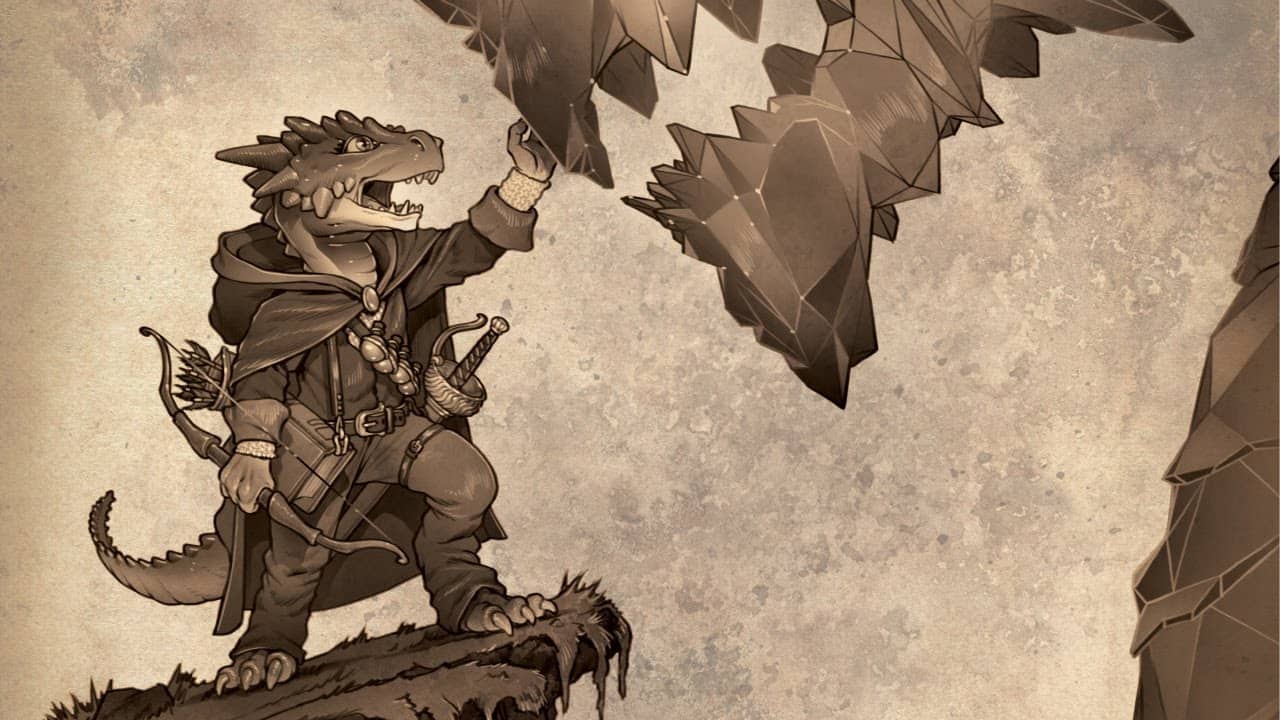
Kobolds are small reptilian humanoids with draconic features and are another monstrous player race. The kobold and orc originally had an ability score decrease as a trait that has since been removed. Kobolds stand about 4 feet tall and are most effective in numbers, using pack tactics to overwhelm enemies. As a kobold, you can utilize these pack tactics even if your allies aren’t kobolds as well.
Leonin
Appearing in Mythic Odysseys of Theros, the Leonin are a race of lion-like humanoids. Their bodies are covered in fur and with males boasting large manes. With retractable claws and a fearsome roar, leonin can be intimidating to deal with.
Most leonin enjoy fighting with others whether that is a physical battle or a verbal one. Once a battle has ended, a leonin doesn’t hold a grudge, having enjoyed the battle regardless.
Lizardfolk
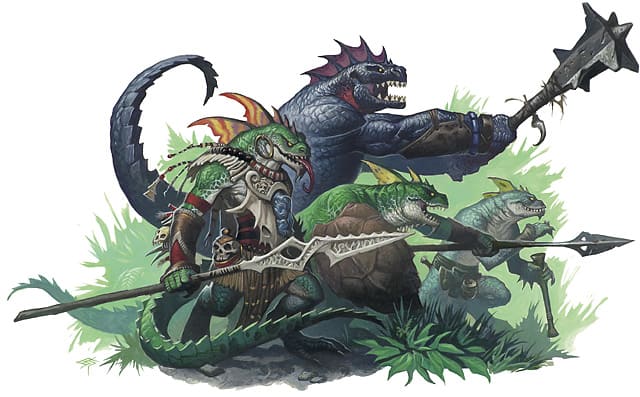
Lizardfolk are cold-blooded reptilian humanoids. Despite looking like a scaly human with a lizard’s head, these reptiles act and think very differently, lacking the same emotion and empathy as humans or elves.
While a human might feel afraid in the presence of a monster, a lizardfolk instead understands that a monster is fearsome, assigning the trait to the monster. Lizardfolk tend to get into trouble with allies around dead bodies, as even allies become sources of food once they have died.
Loxodon
Loxodon is humanoid creatures with the features of elephants. Like firbolgs, loxodon are peaceful giants who are paragons of serenity. A loxodon provoked to anger, however, is a terrifying sight.
Loxodon has tough hides, strong trunks that can lift things and grapple people. Their natural serenity even helps them resist charming or frightening effects.
Read our full Dragons Loxodon 5e Guide.
Minotaur
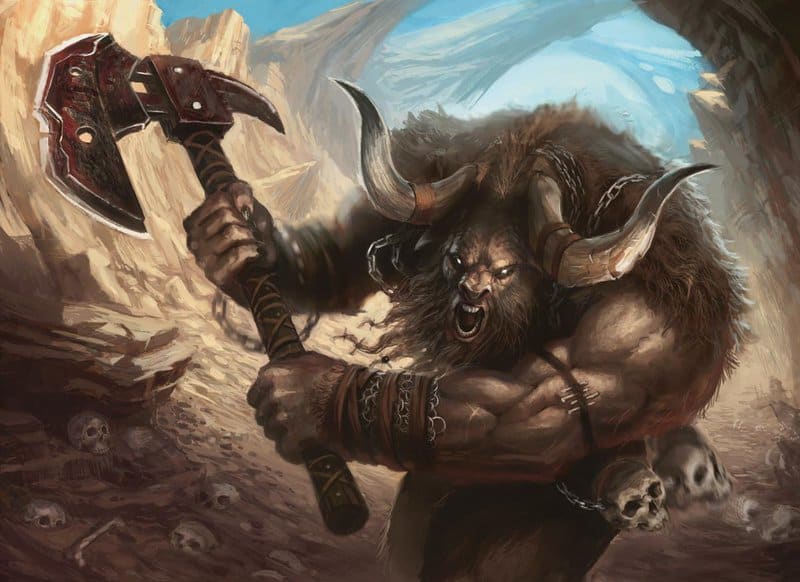
Originating from Greek mythology, minotaurs are a race of humans with the head and tail of a bull. They love the battlefield but are intelligent battle masters who capitalize on strategy before bringing devastation to their enemies either with weapons or with their powerful horns.
Minotaurs are zealous creatures in both battle and in friendship, loudly enjoying themselves around allies.
Orc
Orcs, another monstrous race, are barbaric raiders with savage, pig-like features. The race was originally created by Tolkien for use in Lord of the Rings and has since found a home in the fantasy genre. In D&D lore, the orcs’ god and creator Grummsh is an adversary of the elf god Corellon, creating considerable animosity between the two races.
Orcs are powerful and intimidating creatures with a love for war and have a lust for bloodshed, always seeking out new adversaries to conquer and destroy.
Reborn Lineage
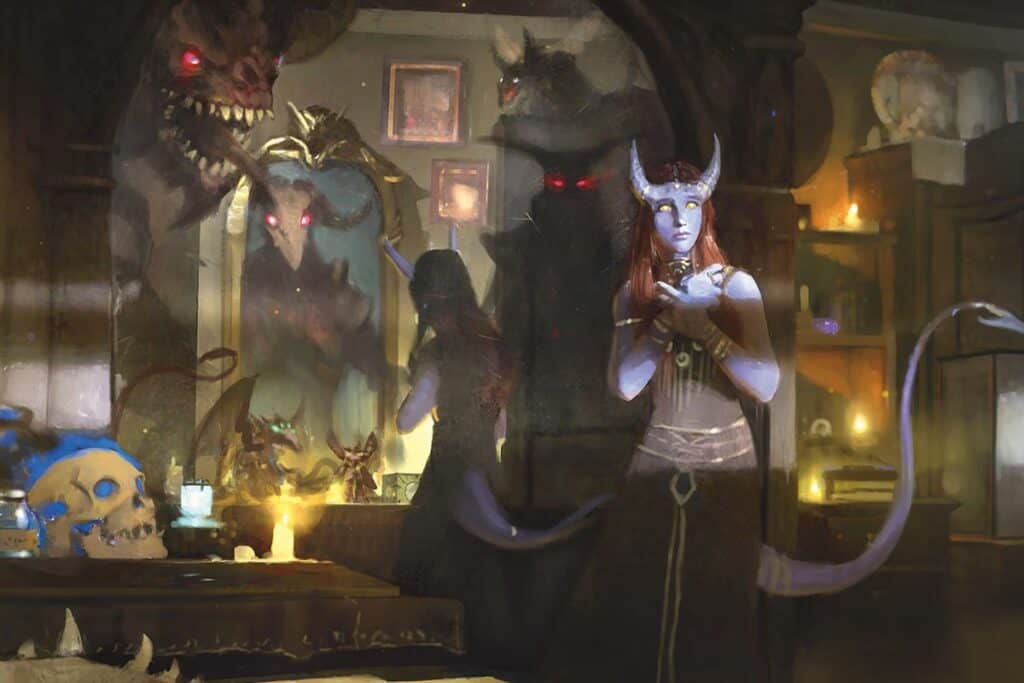
The reborn is the third lineage from Van Richten’s Guide to Ravenloft. Reborn are creatures who have died but, for some reason, still, live. That reason could be magic, divine or dark powers, or completely unknowable.
Regardless, all reborn are deathless in nature. They don’t need to eat, drink, breathe, or sleep and occasionally have flashes of insight into their previous life.
Satyr
Another creature from Greek Mythology, satyrs appear in the Mythic Odysseys of Theros. They are half-human, half-goat creatures with small horns, furry legs, and hooves. Satyrs are wild, untamed, and whimsical creatures. They regularly attempt to bring levity to serious situations, often with mixed results.
Satyrs are also fey creatures, making them immune to spells like Hold Person that only affect humanoids.
Check out our comprehensive Satyr 5e Guide.
Shifter
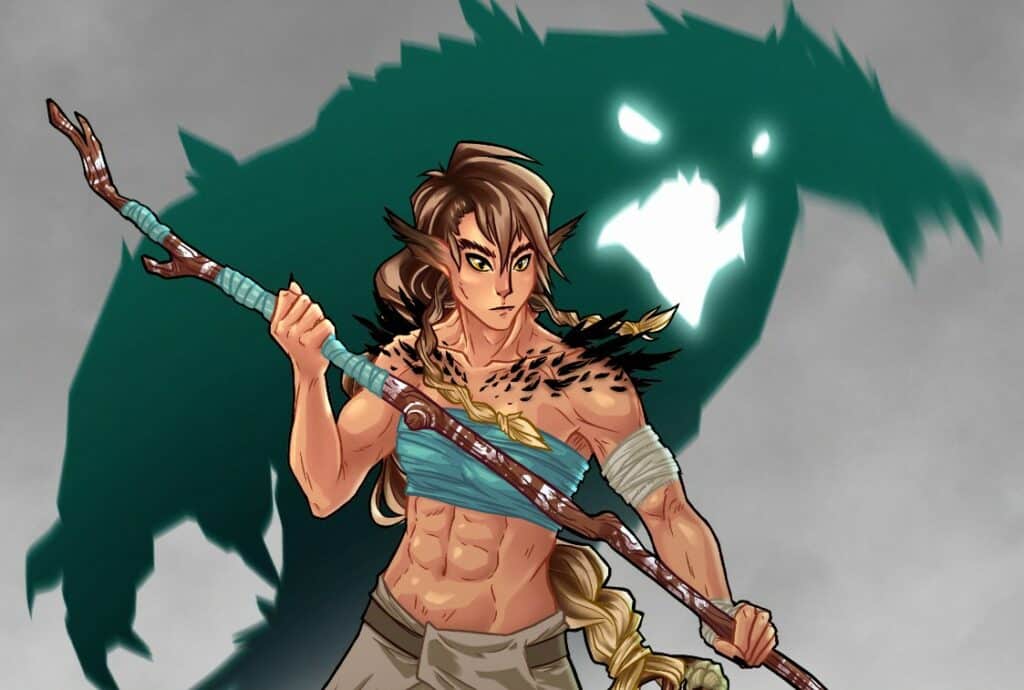
Appearing in Eberron: Rising from the Last War, shifters are a race of beastly humanoids. Their origin is unclear but many believe that they are descended from lycanthropes and are often called were touched. They often walk the line between their bestial and civilized nature.
Shifters can’t fully turn into a beast as a true lycanthrope can. However, they are able to shift into a hybrid state that enhances their bestial form. This looks different depending on the nature of their shifting.
There are four types of shifters. Bearhide shifters are tied to a beast known for its toughness like a bear. Longtooth shifters are tied to a predator such as a tiger or a canine. Swiftstride shifters are tied to quick animals such as felines. Lastly, wild hunt shifters are tied to a beast known for its tracking like many canines.
Simic Hybrid
Simic Hybrids are found in Guildmaster’s Guide to Ravnica and are humans who, through scientific and magical experimentation, have found ways to biologically enhance their bodies with animalistic features. These features can range from aquatic creatures like giant lobster claws to reptilian features like acid spray.
Tabaxi
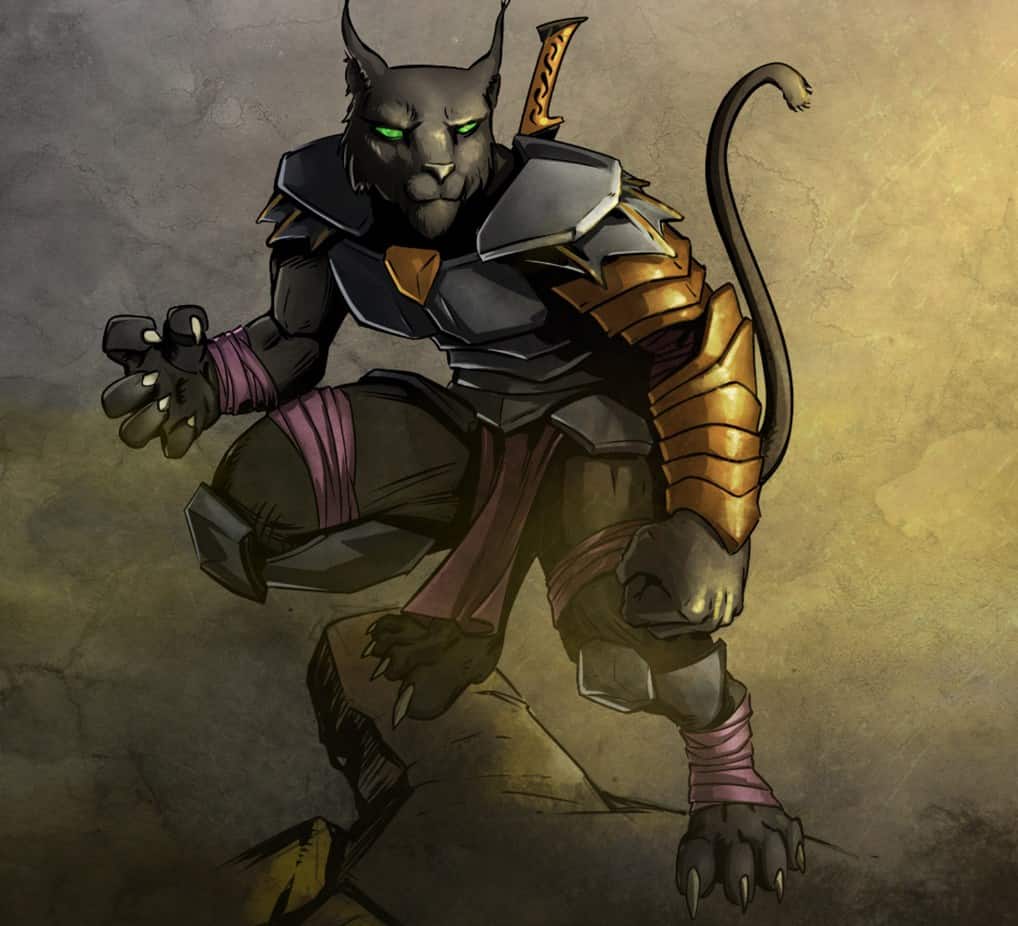
Curious and nomadic, tabaxi are cat-like humanoids uncovering as many secrets and treasures as possible. While gold is nice, knowledge, experience, and rare items are the true treasures to a tabaxi. Their curiosity drives them from place to place, wandering around for a new piece of lore to obsess over.
Tabaxi are quick creatures, able to move with furious speed when necessary, and their retractable claws make them a threat at all times.
Want to know more about the Tabaxi? Here’s our complete Tabaxi Guide.
Tiefling
Tieflings are humanoid creatures whose bloodline was infused with Asmodeus, the Lord of the Nine Hells. As a result, they are devil creatures with horns, thick tails, sharp teeth, and eyes of one full color. Tieflings experience much fear and mistrust from those they encounter given their appearance.
Because of your infernal legacy, you have the innate ability to cast select spells. Mordenkainen’s Tome of Foes published other subraces of tiefling who trace their ancestry not to Asmodeus but to another archfiend of the Nine Hells. These subraces offer different ability score increases and innate spells.
Variant tiefling races exist including feral tieflings and winged tieflings can be found in Sword Coast Adventurer’s Guide.
Check out our complete Tiefling 5e Guide.
Tortle
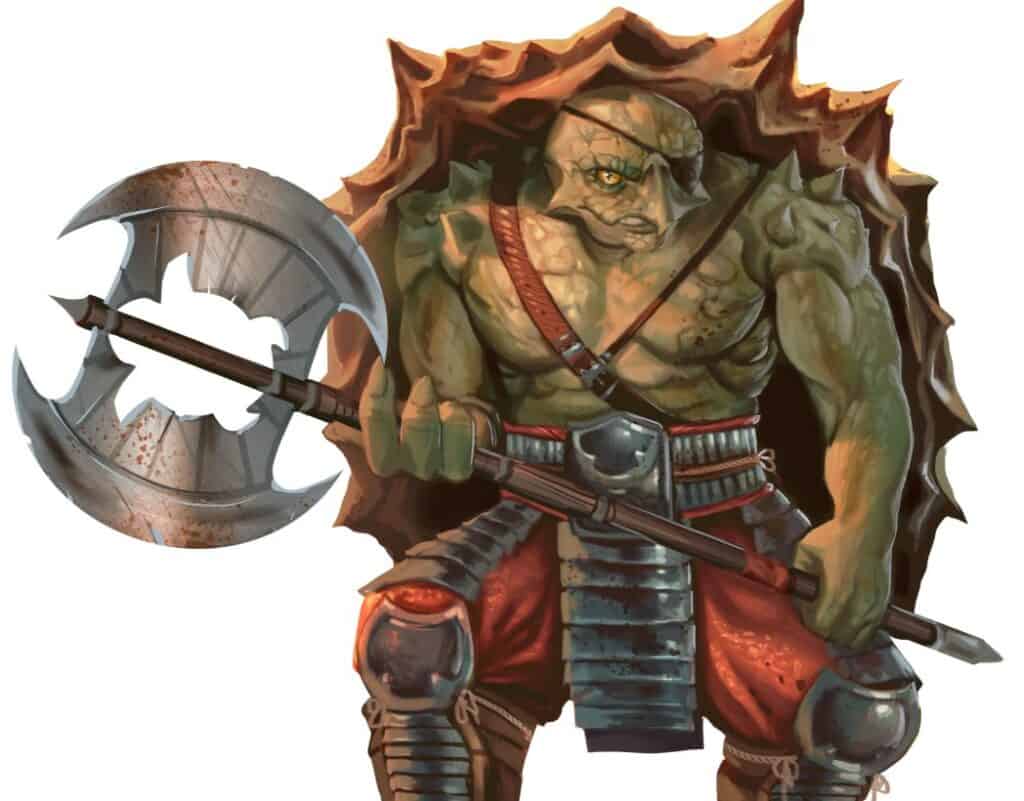
The tortle was a race originally published in its own product but has since been republished in Explorer’s Guide to Wildemount. Tortles are humanoid tortoise creatures with massive shells protecting them from most attacks and the ability to retreat into their shell for every other attack.
Check out this guide to learn more about the Tortle Race in DnD.
Triton
Tritons are aquatic humanoids native to the Elemental Plane of Water. Historically, they functioned like an underwater order of knights dedicated to fighting evil elementals and sea creatures. When many of their foes fled to the Material Plane, some brave Tritons followed to guard and protect the world from what lurks in the depths.
Tritons are disciplined and vigilant, with some innate magical ability and their natural adaptation to deep underwater environments makes them resistant to cold damage.
Vedalken
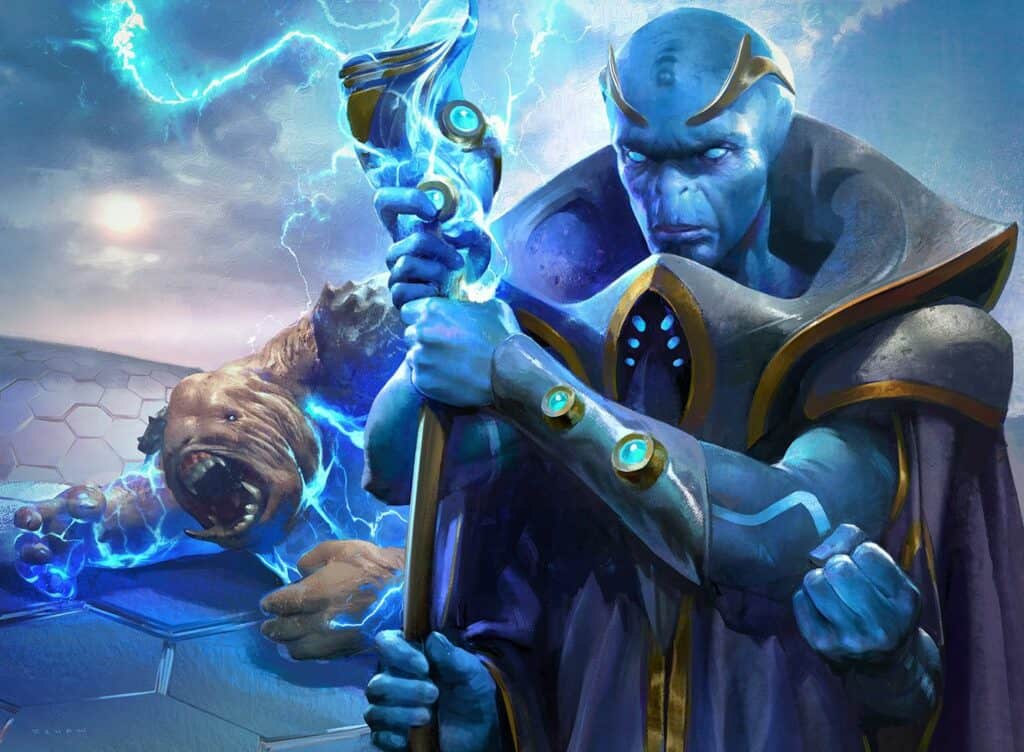
The blue-skinned vedalken are a race of people from Guildmaster’s Guide to Ravnica. They are intellectual people, who happily engage with others’ ideas and disagreements. Vedalken is taller than humans and understands that although perfection is impossible, working towards it is delightful. Given their partially amphibious nature, vedalken are able to absorb oxygen through their skin and breathe underwater for an hour at a time.
Verdan
Verdan appear in Acquisitions Incorporated and are a race of goblinoid creatures transformed by the power of a force of chaos called That-Which-Endures. With jade skin and black blood, the verdan left the dark caves that goblins inhabit and made a new life on the surface.
The chaos that created them has an ongoing effect on them as they grow, changing them dramatically in size as they age.
Warforged
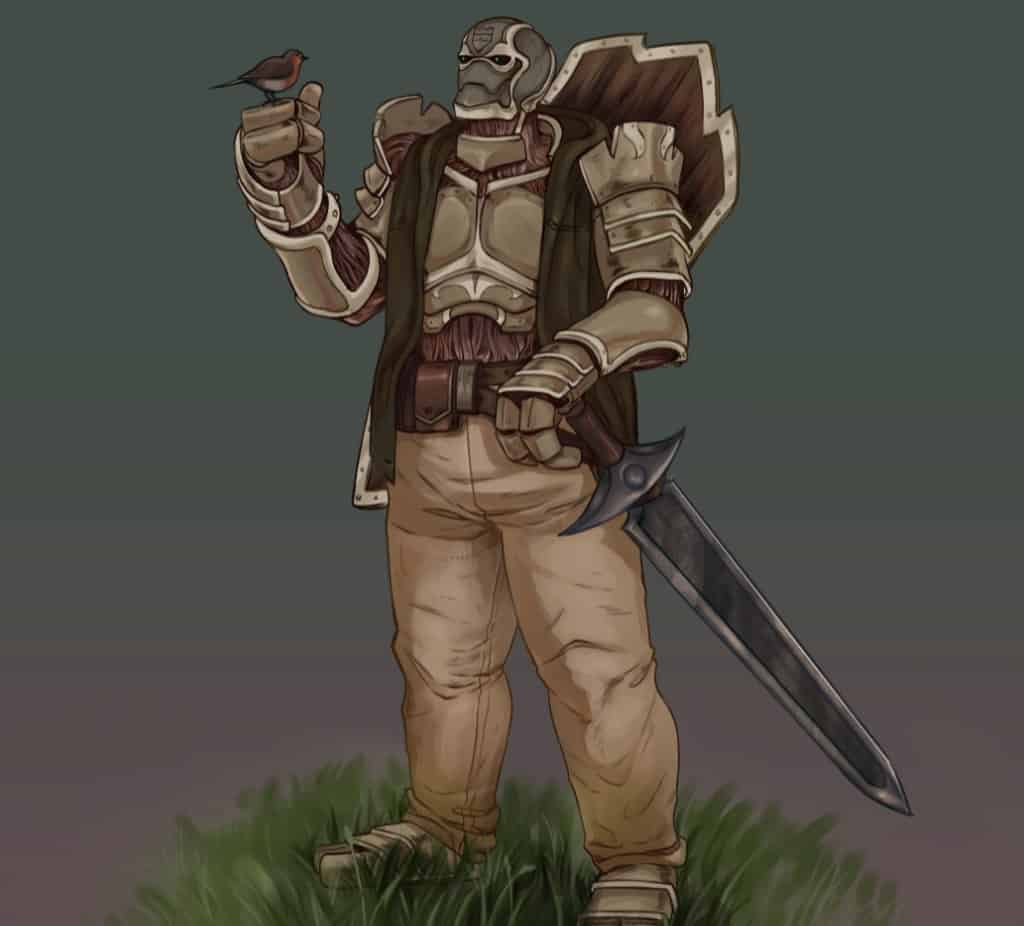
The warforged are a race of creatures originally created as mindless automatons to fight in the last war in Eberron: Rising from the Last War. However, they were given sentience and became a new race entirely. Warforged are made of a mix of materials including stone, metal, chemicals and even plants. Despite their forged nature, warforged are still humanoid creatures.
Warforged are powerful creatures who can’t be put to sleep, are immune to disease, resistant to poison and have natural armor inbuilt in their bodies.
Yuan-Ti Pureblood
The Yuan-Ti are a race of humans who, through dark sorcery and union with serpents, have come to form snake-like features. Purebloods are humanoid in nature, with serpentlike features, scaly patches of skin, and forked tongues.
Purebloods have some innate magical ability, including the ability to charm snakes an unlimited number of times. They are also immune to poison damage and able to resist all magical effects, making them arguably the most powerful race in the game.
F.A.Q.
Question: How many races are there in D&D?
Answer: There are 42 races in D&D 5th edition.
Question: What are all the races in D&D?
• Aarakocra
• Aasimar
• Bugbear
• Centaur
• Changeling
• Custom Lineage
• Dhampir Lineage
• Dragonborn
• Dwarf
• Elf
• Firbolg
• Genasi
• Gith
• Gnome
• Goblin
• Goliath
• Half-Elf
• Half-Orc
• Halfling
• Hexblood Lineage
• Hobgoblin
• Human
• Kalashtar
• Kenku
• Kobold
• Leonin
• Lizardfolk
• Loxodon
• Minotaur
• Orc
• Reborn Lineage
• Satyr
• Shifter
• Simic Hybrid
• Tabaxi
• Tiefling
• Tortle
• Triton
• Vedalken
• Verdan
• Warforged
• Yuan-Ti Pureblood
Question: What are the 12 D&D Classes?
• Barbarian
• Bard
• Cleric
• Druid
• Fighter
• Monk
• Paladin
• Ranger
• Rogue
• Sorcerer
• Warlock
• Wizard
However, classes are different to races in D&D. Your race is your species from birth. Your class determines what kind of adventurer you are.
Question: What is the best race in D&D?
Answer: Yuan-Ti Purebloods are arguably the most powerful race in D&D. They have innate spellcasting, are resistant to all magical effects, and immune to poison damage. Many DMs ban players from playing purebloods.
Question: Can you mix races in D&D?
Answer: While half-elves and half-elves are the mixed races described in D&D, the new custom lineage allows you to make any mix of races or custom races you would like.
Question: What is the smallest race in D&D?
Answer: Kobolds are the shortest race in D&D with a base height of 2’1”.
Question: What is the fastest race in D&D?
Answer: Centaurs have the fastest base speed at 40 feet but tabaxi are able to double their speed to 60 feet for a turn.
Summary
The 42 races in D&D allow players to customize their character in thousands of ways. While the lore about many of these races relies on archetypes, it is possible and sometimes more fun to play characters opposite to how that race typically acts.
After all, D&D is a game about role-playing. The race you choose and how they fit in the setting are a large part of role-playing, so pick something you like!
- Armor of Agathys 5e Guide: What is Armor of Agathys? - August 3, 2022
- Oath of the Ancients 5e Guide - August 3, 2022
- Dissonant Whispers 5e Guide - July 20, 2022